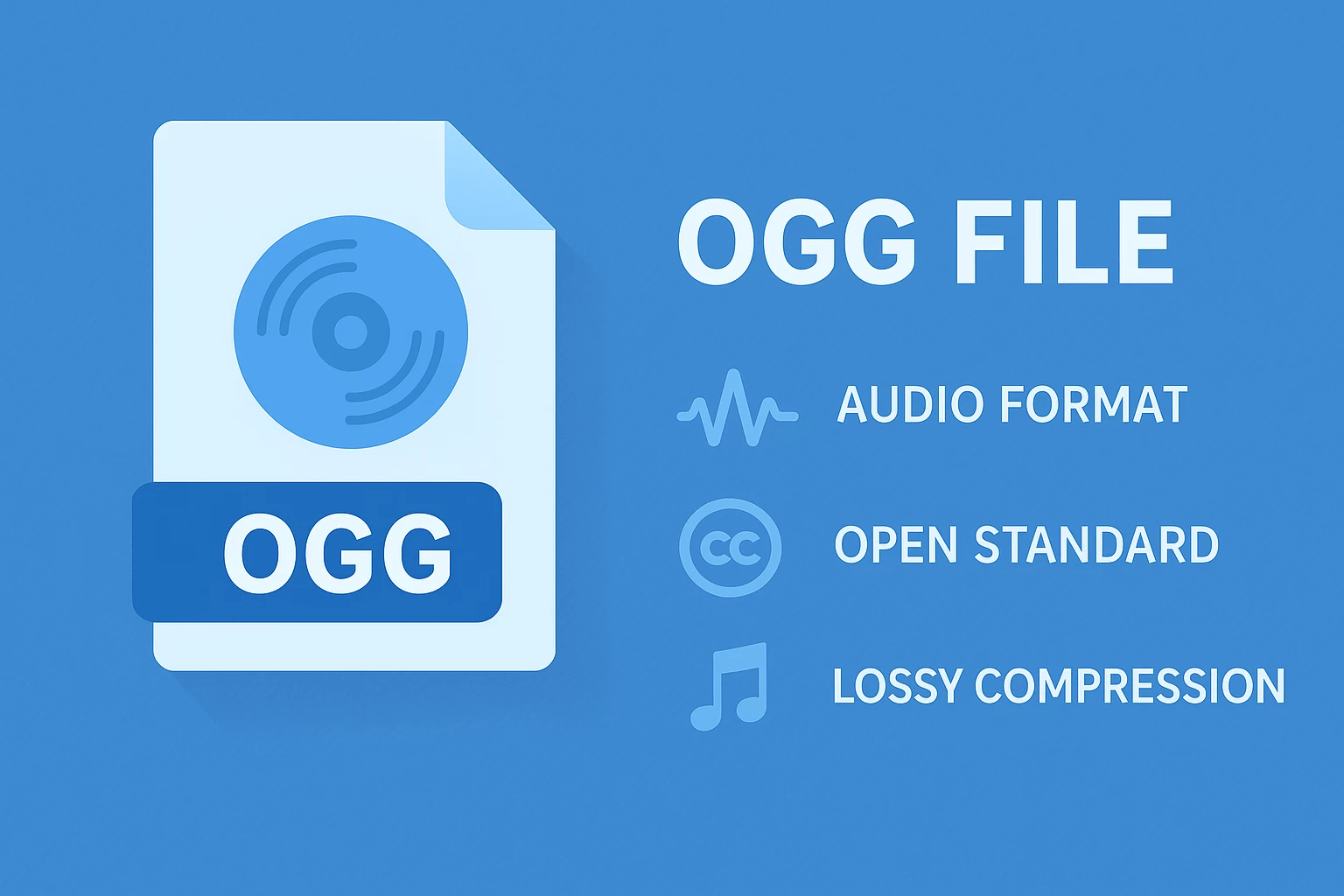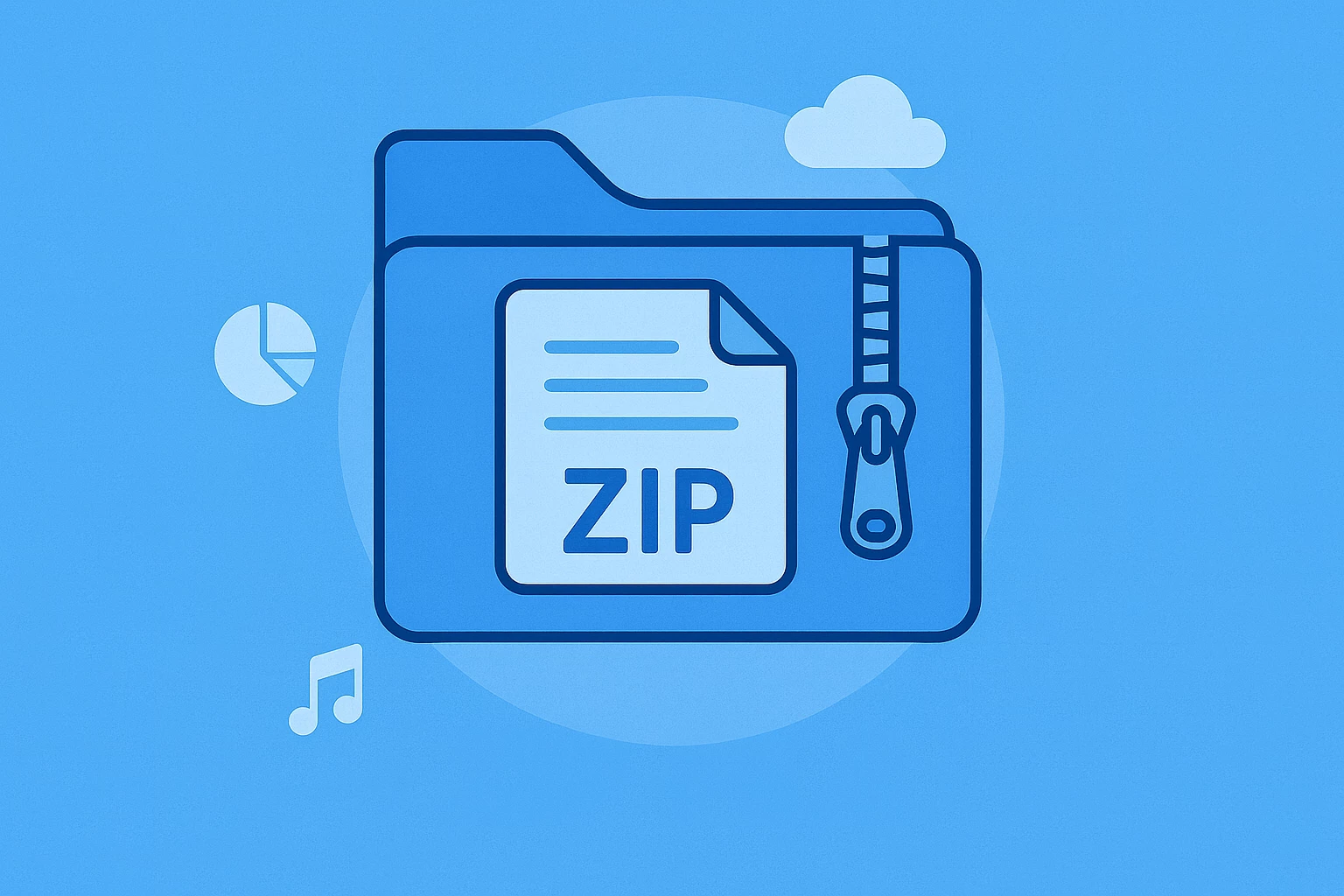
What Is a Zip File? Everything You Must Know (2025 Edition)
I’ve used ZIP files for years without giving them much thought. They’ve always been there when I needed to send a batch of photos, store client documents, or archive an old project. It’s only recently that I realized how much the format still matters, even in 2025.
ZIP files are simple, reliable, and surprisingly efficient. They compress data to save space, bundle multiple files into one, and make sharing easier across platforms.
That’s the reason, no matter if I’m sending assets to a designer or downloading resources from a cloud folder, ZIP is usually the format that makes it all seamless.
In my article, I’ll explain what a ZIP file is, how it works behind the scenes, and how you can create or extract one on any device. I’ll also cover security, file limits, common issues, and a few newer formats that compete with ZIP today.
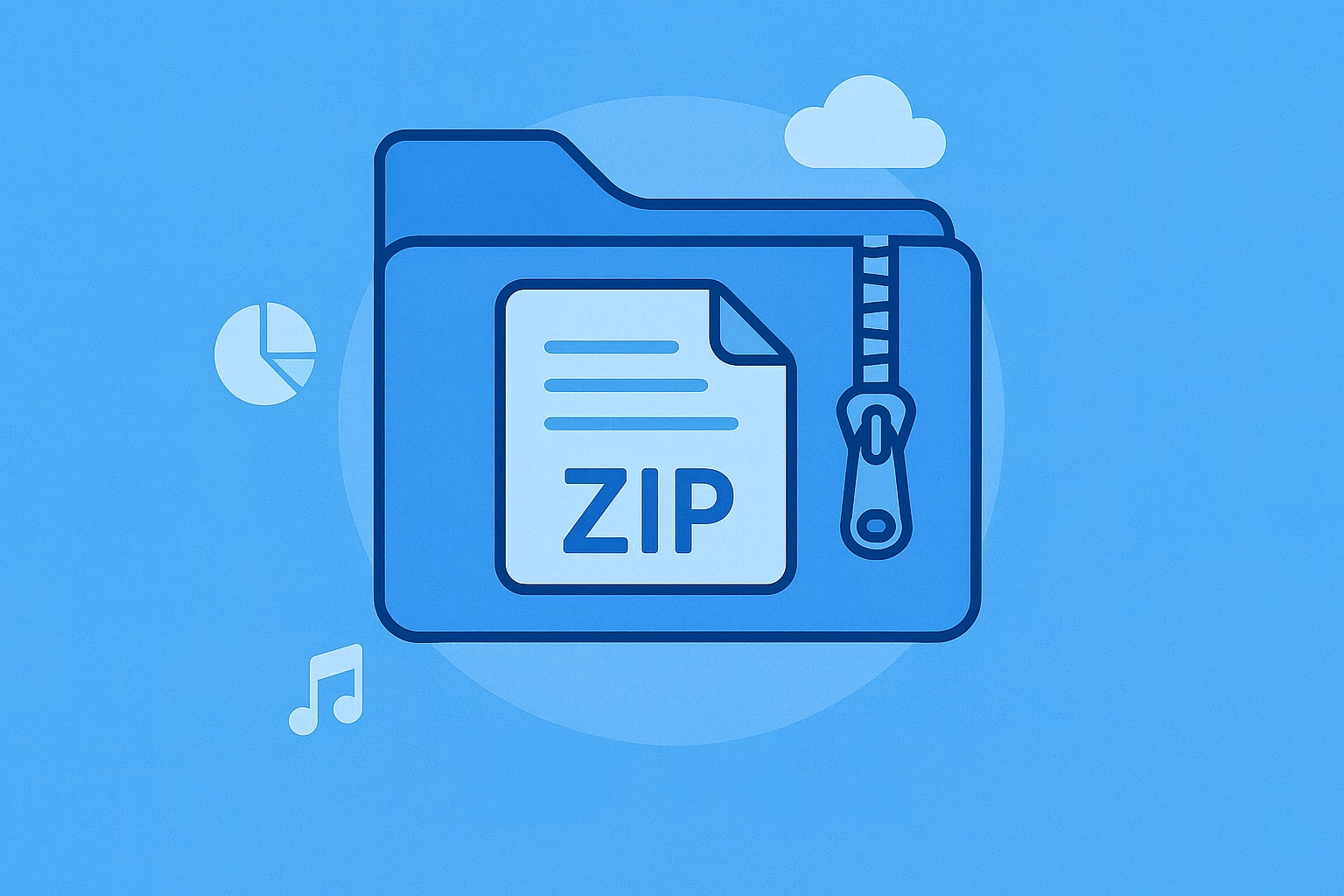
Core Concept – What a ZIP File Really Is#
I see a ZIP file as a compact digital container that keeps multiple items in one place. It can store anything from a single document to an entire project folder while reducing the total file size. The idea is simple: make files easier to store, send, and manage without losing quality.
Anyhow, each ZIP file contains two key parts. One holds the compressed data, and the other serves as an index that records every file’s name, path, and size. This very structure lets me open a ZIP archive, view its contents, and extract only what I need.
ZIP compression identifies repetitive data patterns and replaces them with shorter representations. When unzipped, every file returns to its exact original form. No information is lost, which makes ZIP a reliable, lossless format for both personal and professional use.
Convert ZIP to APK with MConverter
How ZIP Files Work Behind the Scenes#
Every time I compress files into a ZIP, I picture the software scanning through the data, finding repeating patterns, and replacing them with shorter representations. It’s a smart way of removing redundancy without touching the original information.
Plus, ZIP compression is called lossless as the files inside always return to their exact state once extracted.
At the same time, the process also adds structure. Each archive includes compressed data along with a small internal map that records every file’s name, location, and size. When I open a ZIP file, that map helps the tool display its contents instantly and know where to find each file inside.
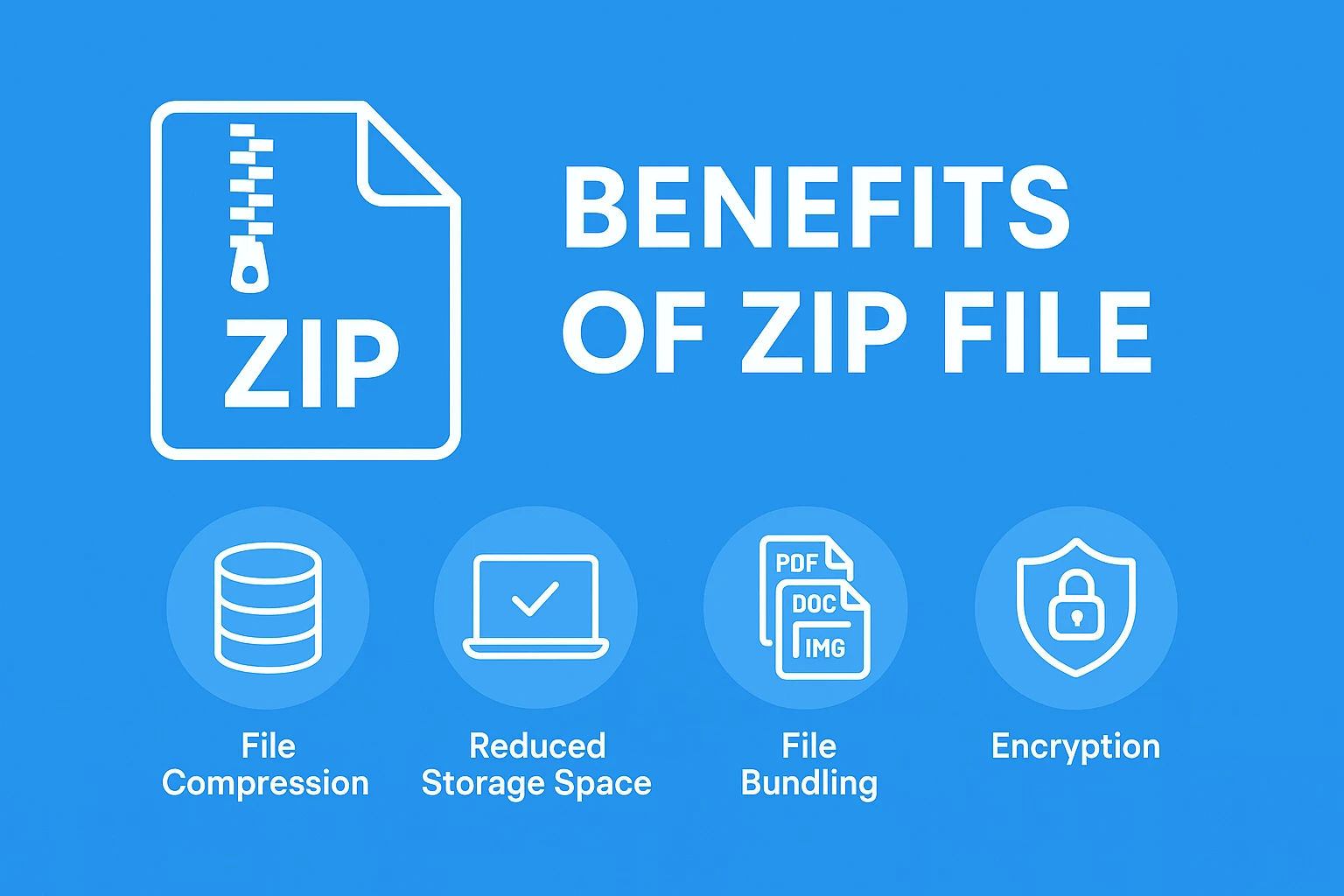
The “.zip” extension is what I see, but the real signature sits at the beginning of the file with the letters PK. It’s a mark that tells ZIP-compatible programs how to read what’s inside. Metadata in the archive also preserves file names, timestamps, permissions, and comments, keeping everything organized once unpacked.
When I extract a ZIP file, the software reverses the entire process. It reads the map, decompresses each file, restores its original structure, and checks integrity to make sure nothing is missing or corrupted. The files expand back to their full form, just as they were before compression.
Finally, it’s worth understanding the difference between compression ratio and file size reduction. The compression ratio compares the compressed file’s size to the original, while reduction shows how much space I actually saved.
For example, if a 100 MB folder becomes 40 MB, the ratio is 0.4 and the reduction is 60 percent. Together, these numbers give a clear picture of how efficient ZIP compression can be.
Convert ZIP to ISO with MConverter
Why ZIP Files Are Still Widely Used#
Even with so many modern file formats and cloud-sharing options, I still rely on ZIP files almost every day. They continue to exist not because of nostalgia, but because they solve a very real problem: keeping large amounts of data organized, portable, and easy to share.
Over the years, many tools have come and gone, yet ZIP has remained compatible with nearly every operating system and device. I can send a ZIP file to anyone, and they’ll open it without needing special software. Such a level of reliability saves time and avoids the typical back-and-forth over file formats or compatibility issues.

Another reason ZIP files still matter is their efficiency. They reduce file size without compromising quality, which is especially useful for email attachments, backups, or archiving older projects. I can compress hundreds of documents into one clean package and store them securely without cluttering my drive.
Beyond practicality, ZIP files also maintain strong integration across platforms. Windows, macOS, Android, and iOS all have built-in support, while cloud storage tools like Google Drive and Dropbox can preview or extract them directly.
In short, ZIP files remain popular because they strike the right balance between simplicity, compatibility, and performance. They may not look advanced, but they still do one job better than most modern alternatives: keeping files compact and ready to share anywhere.
Also Read: What Is HEIC File: Complete Guide
Common Uses of ZIP Files in 2025#
Even with new sharing methods and cloud storage tools everywhere, I still rely on ZIP files more often than I expect. They have quietly adapted to modern workflows and remain one of the easiest ways to move and protect digital content.
In 2025, their usefulness goes far beyond simple compression.
File Sharing and Email Attachments#
When I need to send several documents or images by email, I combine them into a single ZIP file. It keeps everything organized, fits better within attachment limits, and reaches the recipient faster.
Similarly, I like how ZIP preserves folder structure, so nothing gets misplaced or renamed along the way. For quick transfers, it’s still one of the most efficient formats I can use.
Software Distribution and Backups#
Many developers continue to release programs, plugins, and scripts as ZIP archives. It keeps all files packaged together and easy to extract without requiring installation.
Additionally, I use ZIP for backups too because it keeps folders clean and compact while protecting them from accidental edits. When I move projects between drives or upload them to the cloud, ZIP gives me both space savings and peace of mind.
Project Collaboration in Teams (Designers, Developers, Marketers)#
In collaborative work, ZIP files simplify handoffs. Designers send entire asset folders, developers share builds, and marketers deliver campaign materials all in one archive.
In the same way, it avoids version mix-ups and missing files, especially when teams use different platforms. Even in companies that rely on cloud sharing, ZIP remains a quick, universal solution everyone can open without issues.
Mobile Apps and Cloud Storage Integration#
On mobile, ZIP files are just as convenient. I can preview or unzip archives directly in Google Drive, Dropbox, or iCloud without needing third-party tools. My phone’s file manager handles ZIP files almost as easily as a computer. That level of compatibility keeps the format relevant for both casual users and professionals who switch between devices throughout the day.
How to Create a ZIP File#
Creating a ZIP file has become second nature to me. I use it all the time to group files, store backups, or send projects without clutter. It works the same way on every device, which makes it reliable when I’m switching between systems.
With just a few clicks, I can compress entire folders, save space, and keep everything neatly packaged for storage or sharing. It’s a small action, but it keeps my files organized and easy to manage.
Here’s how I usually create ZIP files on different platforms, including Windows, macOS, Linux, mobile devices, and through the command line.
Related Article: What Is PNG: A-to-Z Guide
On Windows (Built-in Tools and Third-Party Software)#
On Windows, I usually right-click the files or folders I want to compress, choose Send to > Compressed (zipped) folder, and the system instantly creates an archive in the same location. When I need more control, I use 7-Zip or WinRAR.
Similarly, both programs allow me to adjust the compression level, split large folders into smaller archives, or secure everything with a password. For large client projects or shared resources, extra control often makes the process more efficient and organized.
How to Create ZIP file on Windows Laptop and PC
On macOS#
On macOS, compressing files is quick and consistent. I select the items, right-click, and choose Compress. The operating system automatically creates a ZIP file in the same folder.
And when I need more features such as encryption or custom compression options, I turn to Keka. It gives me a clean interface and reliable performance without complicating the task.
On Linux#
Linux provides the widest range of flexibility. In a graphical interface, I can right-click and compress files just like on other platforms. When I’m using the terminal, I prefer running a simple command such as zip -r archive.zip foldername.
It’s fast, accurate, and ideal for automating regular backups or project archiving. Short scripts help me handle several folders at once without opening additional tools.
On Mobile Devices (iOS and Android)#
Mobile platforms handle ZIP compression smoothly now. Both iOS and Android allow me to create archives directly from the built-in file manager. I select what I want to compress, tap Compress, and the ZIP file appears instantly.
For larger folders or professional transfers, I use WinZip Mobile or RAR, which give me more control over structure and file organization.
Convert ZIP to TXZ with MConverter
How to Use Command Line or Terminal for Advanced Users#
I often use the command line to handle compression tasks because it gives me complete control and saves time. Running a simple command such as zip -r reports.zip /Documents/Reports compresses an entire folder into one archive.
If I only want specific file types, I use a command like zip images.zip *.png to collect all PNG files in the directory.
For routine backups, I sometimes automate the process with short scripts. A command such as zip -r backup_$(date +%Y-%m-%d).zip /Projects creates a new archive each day and names it by date. It keeps everything organized without manual effort.
Anyhow, the command line may look technical, but once I got used to it, it became the most efficient way to compress, organize, and archive files consistently.
How to Convert ZIP Files#
Sometimes I need to convert a ZIP file into another format, such as RAR, 7z, or TAR. It helps when I’m collaborating with someone who uses a different compression tool or when I want a smaller archive for storage. The process is straightforward once I choose the right solution.
If you want the fastest way to do it, I recommend using MConverter. Our platform is an online tool that lets you convert ZIP files directly in your browser without installing anything.
You simply upload your ZIP file, select the format you want, and download the converted archive in seconds.
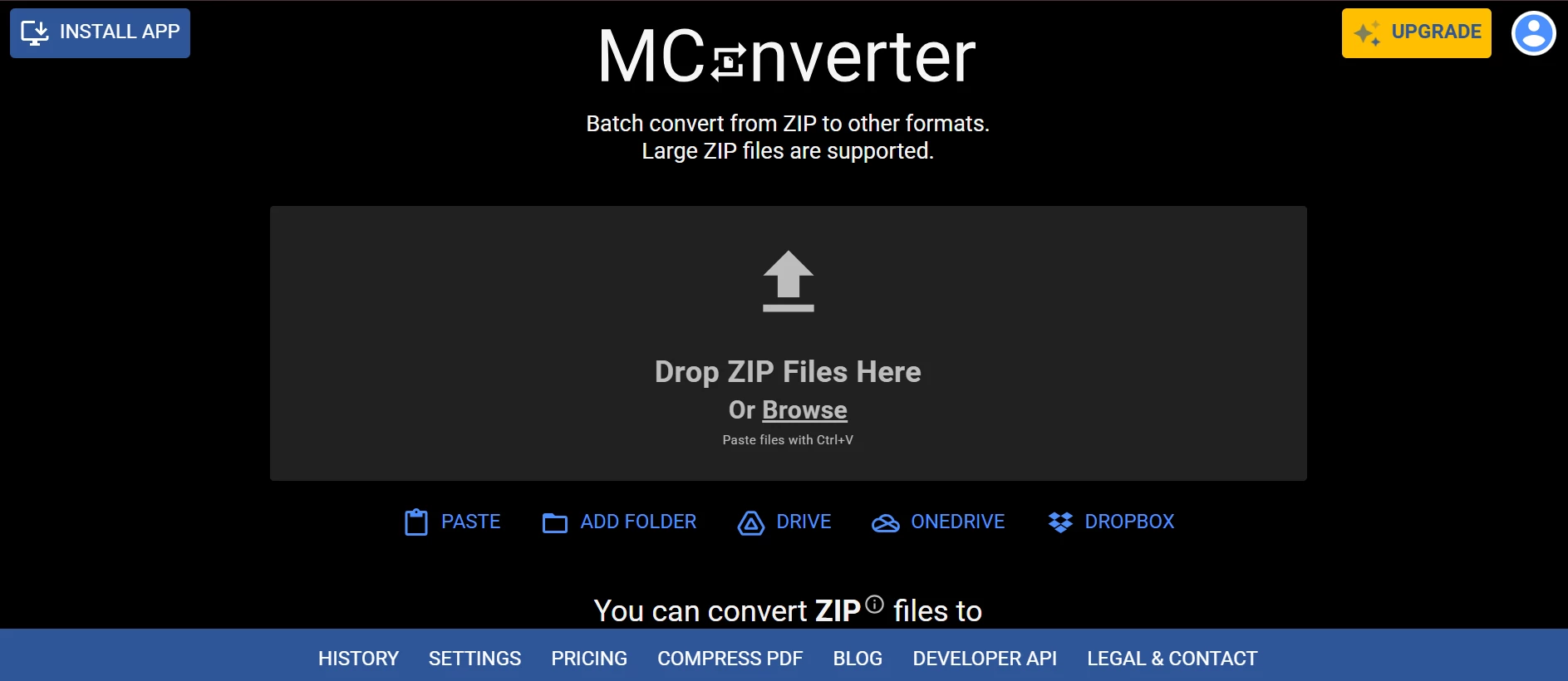
It works on any device, handles multiple conversions at once, and deletes files automatically to maintain privacy.
For offline use, I still rely on software like 7-Zip or WinRAR to manually extract and re-compress files. But when I need speed and simplicity, MConverter is the tool I turn to. It’s quick, secure, and perfect for anyone who just wants to get the job done without extra setup.

Convert JAR to ZIP with MConverter
How to Extract or Unzip Files#
Unzipping files is something I do almost every day, whether I’m reviewing a client’s assets, opening shared documents, or restoring an archived project. It’s one of those simple digital routines that just works, no matter what system I’m using.
Once the archive is extracted, I can jump straight into the content without dealing with scattered files or missing folders.
On Windows, I usually right-click the ZIP archive and choose Extract All. The system asks where I want the files to go, and within a few seconds, everything appears exactly as it was before compression. If the archive is large or password-protected, I prefer using 7-Zip or WinRAR since they extract faster and handle damaged files better.
How to extract Zip files on PC? #zipfile
On macOS, the process feels even simpler. A quick double-click is all it takes for the ZIP file to unpack in the same folder. I don’t need to set anything up. For files created on other systems, I sometimes use Keka because it reads nearly every archive type and gives me a bit more control when something doesn’t open properly.
Linux makes extraction just as smooth. When I’m working in the terminal, I run a short command like unzip archive.zip -d foldername to unpack everything exactly where I need it. It’s fast, efficient, and perfect when I’m dealing with large directories or backups.
On mobile, I like how easy it’s become to manage ZIP archives. Both iOS and Android let me unzip files directly in their built-in file managers. If I’m opening a large archive or one that’s encrypted, I use RAR or WinZip Mobile for better control. It feels convenient to handle full projects from my phone without waiting to switch to a computer.
No matter the device, the process always feels familiar: select the archive, unzip it, and everything falls neatly back into place. It’s a simple step that makes digital work far more manageable.
Convert ZIP to TAR with MConverter
ZIP File Security and Privacy#
I’ve always liked how convenient ZIP files are, but I’ve also learned to be cautious with what I store inside them. Compression alone doesn’t make files secure. Anyone who gets access to an unprotected ZIP archive can open it and view the contents instantly.
When I need to secure files, I usually create a password-protected ZIP archive. Tools like 7-Zip, WinRAR, or Keka make it easy to add encryption during compression.
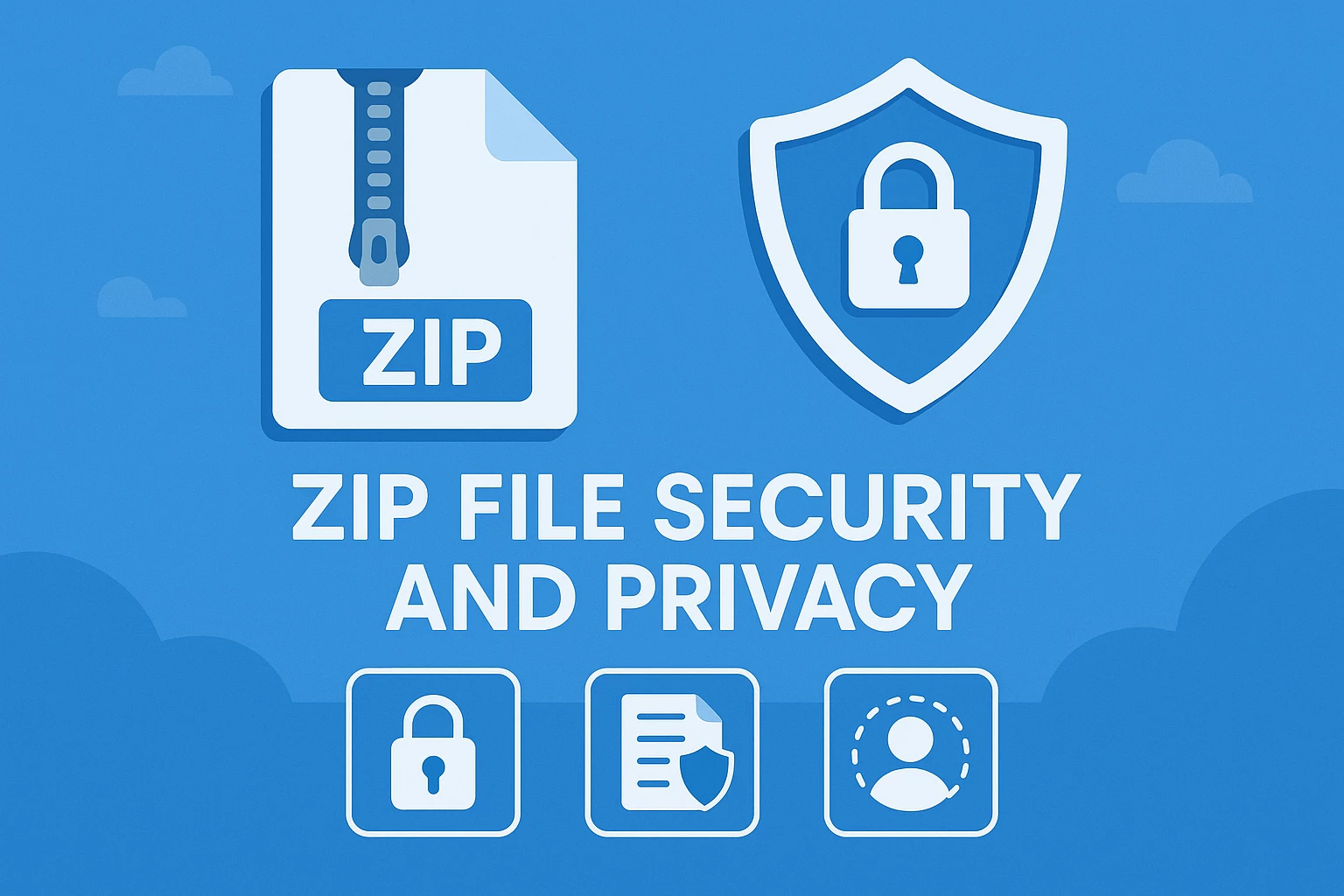
Moreover, modern encryption standards, such as AES-256, protect the archive with a strong password that scrambles the contents until it’s unlocked. I use this option for client documents, invoices, or any material that contains private information.
However, I’ve noticed that not all ZIP programs handle security the same way. Some older tools still rely on outdated ZipCrypto encryption, which can be cracked easily. For sensitive files, I always check that the program supports AES encryption before compressing. A secure archive is only as strong as the tool that created it.
When sharing a password-protected ZIP file, I never include the password in the same message or email. I prefer sending it through a different channel, such as a quick message or call, just to keep it separate. It’s a simple step, but it makes a big difference in keeping data safe.
Even with encryption, I treat ZIP files as temporary storage rather than long-term protection. Once the recipient downloads and unpacks the archive, I usually delete the ZIP file from my system. It’s a small habit that helps prevent old archives from becoming a security risk later on.
In short, ZIP files can be secure if they’re created with the right settings and handled responsibly. I’ve learned to see them not only as a way to organize data but also as something that needs the same level of care as any other sensitive file.
Also Read: What Is an Iso File? The Ultimate Guide
ZIP vs RAR vs 7z vs TAR: A Practical Comparison
Over the years, I’ve worked with all major archive formats and noticed that each one serves a slightly different purpose. Some prioritize compression strength, others focus on compatibility or file integrity. Choosing the right format depends on what I need at the moment: speed, security, or flexibility.
To make the differences clearer, here’s how I usually compare the most common formats side by side:

In most cases, I still rely on ZIP for quick sharing and everyday storage. When I need tighter compression or stronger encryption, I switch to 7z. RAR works best for large personal backups, while TAR remains a dependable choice for Linux projects that require exact file structure preservation.
Each format has a clear purpose, but ZIP continues to stand out for its balance of speed, simplicity, and compatibility.
Common ZIP File Problems and How to Fix Them#
ZIP files are usually dependable, but I’ve learned that even a small interruption during download or compression can cause real issues. Some archives refuse to open, others show errors halfway through extraction, and occasionally, the file looks fine until I try to use it.
In the end, most of these problems are fixable once you understand what caused them.
Corrupted or Incomplete ZIP Archives#
Corruption often happens when a download or transfer is interrupted. The archive may appear complete, but extraction fails midway. I usually start by checking the file size against the original. If it’s smaller than expected, I download it again instead of forcing extraction.
Next, if I want to create archives, I wait for the process to finish before sending or uploading anything. It sounds simple, but rushing often leads to incomplete files that can’t be repaired later.
“Invalid Archive” or “Cannot Open File” Errors#
Sometimes an archive won’t open because the program I’m using doesn’t support the compression method used to create it. Built-in extractors can fail on files made with 7-Zip or WinRAR. In those cases, I switch to 7-Zip, Keka, or The Unarchiver, which usually solves the problem.
If the file still doesn’t open, it’s a sign of damaged data, and redownloading it is faster than trying to repair it manually.
ZIP File Not Extracting on macOS or Mobile#
I’ve had cases where ZIP files created on Windows refused to open on macOS or mobile devices. The issue often comes from outdated compression settings or unsupported characters in filenames.
If that happens, I re-compress the files using 7-Zip or Keka with a standard ZIP format, and everything works fine. On mobile, I use apps like WinZip Mobile or RAR, which can open a wider range of archives than the built-in file manager.
Tools and Methods to Repair Damaged ZIP Files#
When a ZIP file is too valuable to discard, repair tools can sometimes save it. WinRAR’s Repair Archive option has recovered several corrupted files for me by rebuilding the archive’s internal structure.
On Linux, the command zip -F or zip -FF helps fix partial archives. For critical data, I always keep a second copy before attempting a repair because partial recovery can overwrite the damaged file.
Over time, I’ve realized that prevention matters more than repair. Keeping backups and verifying uploads takes far less effort than trying to recover a broken ZIP file later.
Convert ZIP to TBZ2 with MConverter
ZIP File Size Limits and Performance Tips#
ZIP files are flexible, but they still have practical limits. Over time, I’ve noticed that performance starts to drop when archives grow too large or contain too many small files. By paying attention to size and structure, I can avoid long compression times, upload errors, and damaged archives.
Typically, most ZIP tools manage archives up to around 4 GB using the traditional format. However, once a file exceeds that size, I switch to the ZIP64 extension, which supports much larger archives, even beyond 100 GB.
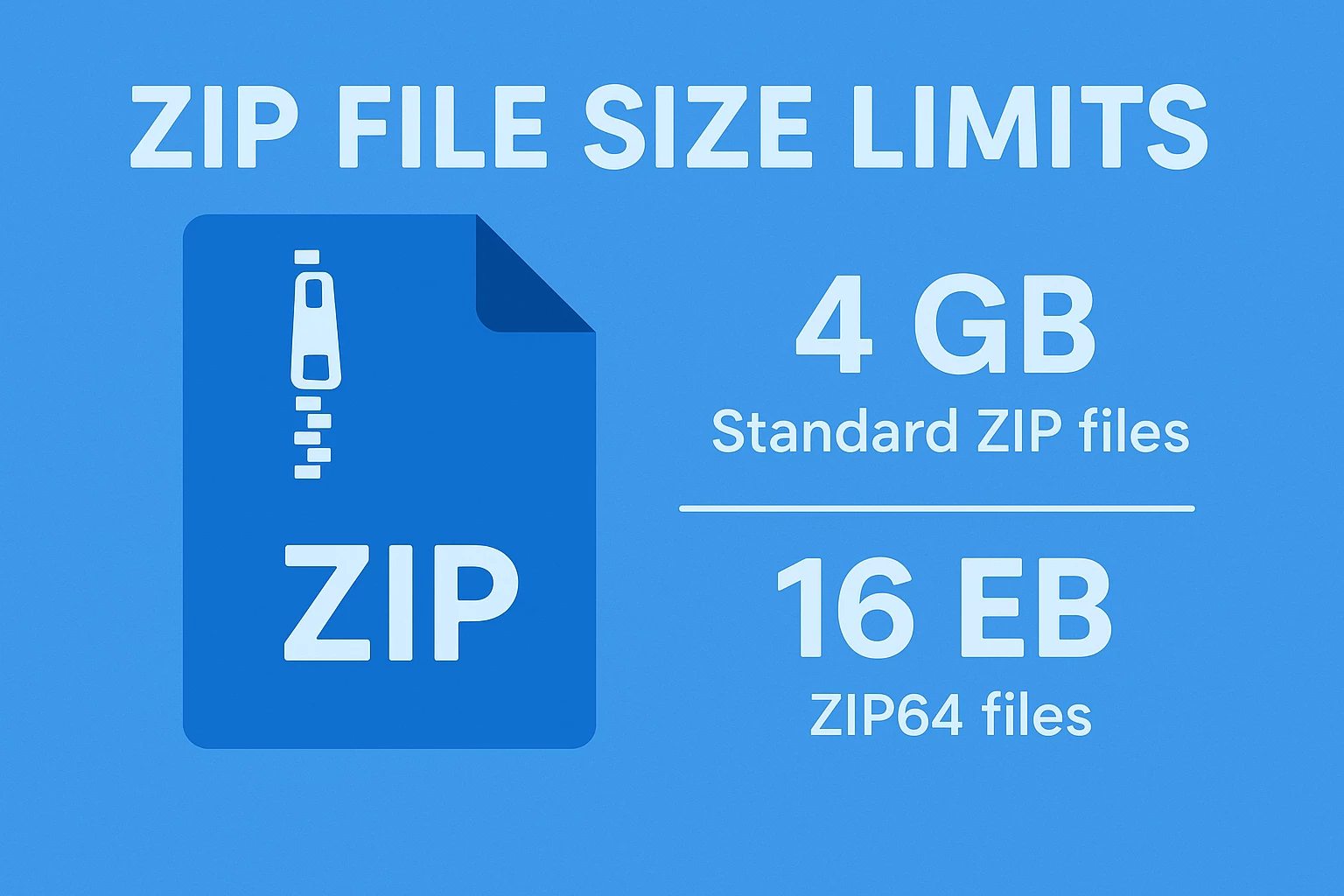
Similarly, enabling ZIP64 in 7-Zip or WinRAR is important because older tools sometimes fail silently when a file goes past the standard size limit.
Moreover, file type plays a big role in how efficiently an archive compresses. Images, videos, and PDFs are already compressed, so they rarely shrink further inside a ZIP.
In those cases, I include them only for convenience. Text documents, spreadsheets, and project folders, on the other hand, compress extremely well and make the process worthwhile.
Plus, hardware performance influences compression speed. On slower computers, I lower the compression level to shorten the process. The difference in file size is minimal, and the task completes much faster.
For very large archives, I often split them into smaller parts using the split volume feature in 7-Zip or WinRAR. This makes transfers more manageable and prevents failures during uploads or downloads.
Before I start compressing, I also tidy up the folder. Removing unnecessary files, duplicates, and temporary data not only speeds up the process but also keeps the extracted version cleaner later on. It’s a simple habit that saves both time and space.
Overall, I try to keep each ZIP file under 4 GB, activate ZIP64 for larger projects, and avoid compressing files that are already optimized. With these small adjustments, I can maintain performance, protect data integrity, and make file management much smoother.
Convert MCTEMPLATE to ZIP with MConverter
Can ZIP Files Lose Data During Compression?#
ZIP files don’t lose data during compression because the format is completely lossless. The process only reduces file size by removing redundant patterns, not actual content. After extraction, every file returns to its exact original form.
Data loss can only occur if the archive gets corrupted during download, transfer, or storage, not from the compression itself. Keeping a verified copy or backup prevents issues if the archive ever becomes damaged.
Are Password-Protected ZIP Files Completely Secure?#
Not entirely. Security depends on the encryption method used. Older ZIP archives with ZipCrypto are easy to crack, while AES-256 encryption in tools like 7-Zip or WinRAR is much safer. I always use AES encryption and a strong password, but I never treat ZIP protection as permanent security.
What’s the Largest File Size a ZIP Can Handle?#
Standard ZIP files can handle up to about 4 GB in size. Anything larger requires the ZIP64 format, which supports files well over 100 GB. Most modern tools like 7-Zip, WinRAR, and Keka enable ZIP64 automatically, so I use it whenever I’m compressing large folders or backups.
How Can I Repair a Corrupted ZIP File?#
I usually start with the repair feature in WinRAR or 7-Zip, which can rebuild damaged archives and recover most files. On Linux, running commands like zip -F or zip -FF often helps fix incomplete downloads. If the archive is severely damaged, I re-download or request the original file again. Keeping a verified backup is always the safest solution.
Can I Open ZIP Files Without Software?#
Yes. Most operating systems, including Windows, macOS, Android, and iOS, have built-in ZIP support. I can open, view, and extract files directly through the file manager without installing anything extra. For older systems or unsupported formats, I use tools like 7-Zip or Keka to ensure full compatibility.
What’s the Fastest Way to Create ZIP Files Online?#
The quickest method is using a browser-based compressor like ezyZip, Convertio, or FreeConvert. I just upload the files, click compress, and download the ZIP archive within seconds. These tools work well for quick tasks, but I avoid uploading sensitive data since most online compressors don’t offer strong encryption or privacy guarantees.
Do ZIP Files Affect SEO When Uploaded to Websites?#
No. ZIP files don’t impact SEO directly because search engines can’t read or index their contents. However, large archives can slow down page loading if linked for download, which may indirectly affect performance metrics. I usually keep ZIP downloads separate from main website pages and optimize file size to maintain good site speed.
Convert ZIP to TINI with MConverter
Are ZIP Files Compatible With Iphones and Android Devices?#
Yes. Both iPhones and Android devices can open ZIP files using their built-in file managers. I can tap a ZIP file in the Files app on iOS or the My Files app on Android to preview or extract its contents. For larger or encrypted archives, I use apps like WinZip Mobile or RAR for smoother handling.
What’s the Best Alternative to ZIP?#
If I need a quick online option, MConverter is one of the best alternatives. It lets me compress and convert files directly in the browser without installing extra software. The process is fast, secure, and supports multiple formats beyond ZIP. For offline use, I still turn to tools like 7z or RAR, but for quick online compression or conversion, MConverter feels much more convenient.
About the author
Mihael joined MConverter as a co-founder in 2023, bringing a vision to transform a tech tool into a product company built around meaningful user experience. With roots in B2B sales, product development, and marketing, he thrives on connecting the dots between business strategy and customer needs. At MConverter, he shapes the bigger picture - building the brand, inspiring teams, and pushing innovation forward with a can-do mindset. For Mihael, it’s not just about file conversions, but about creating experiences that deliver real impact.
Check out more articles
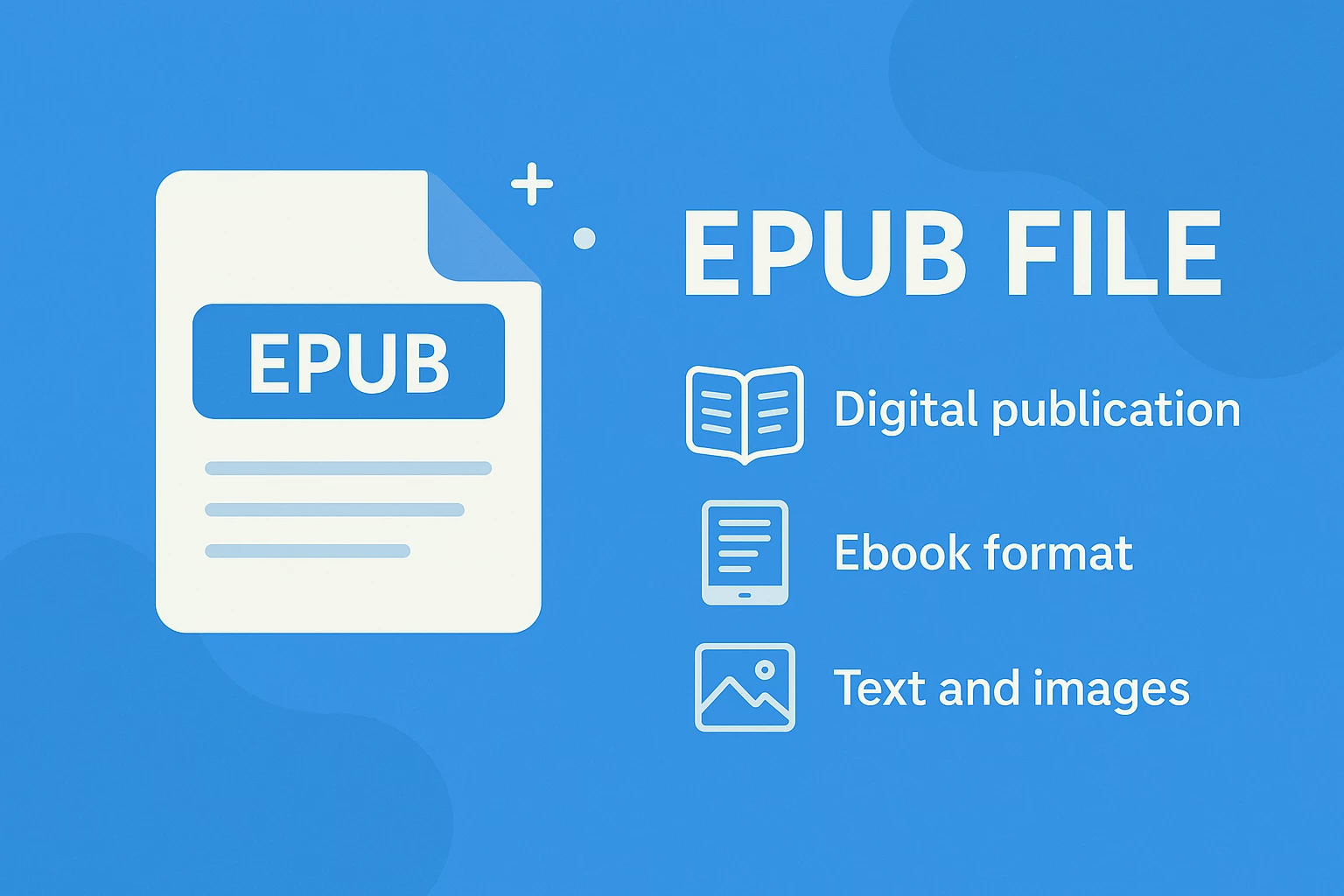
EPUB Files - What They Are & How to Open Them

What Is an ISO File? The Ultimate Guide for 2025
